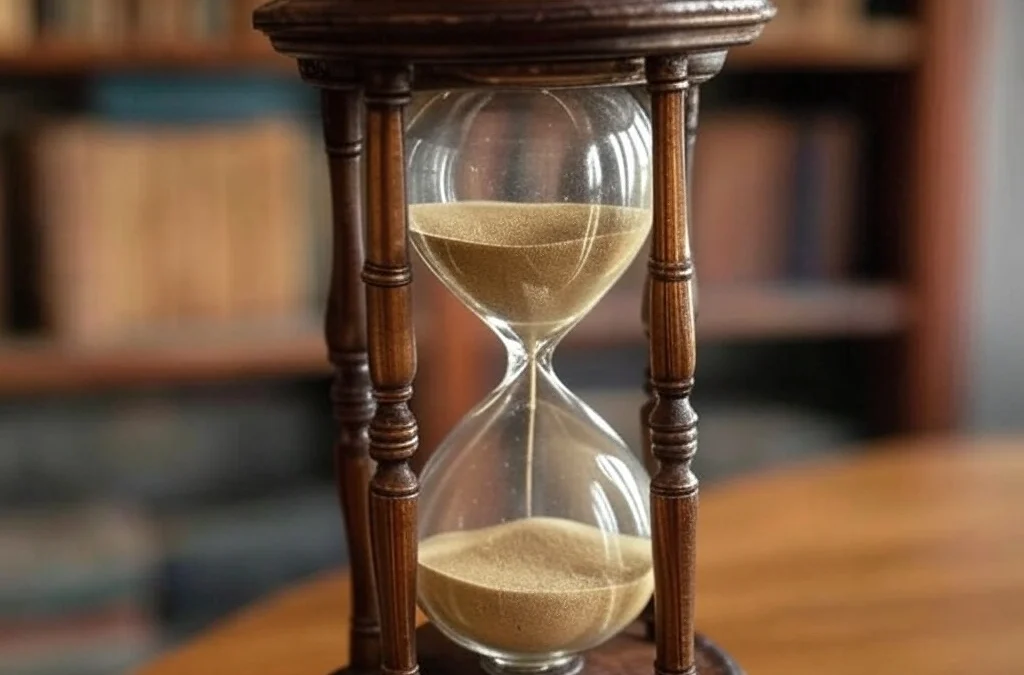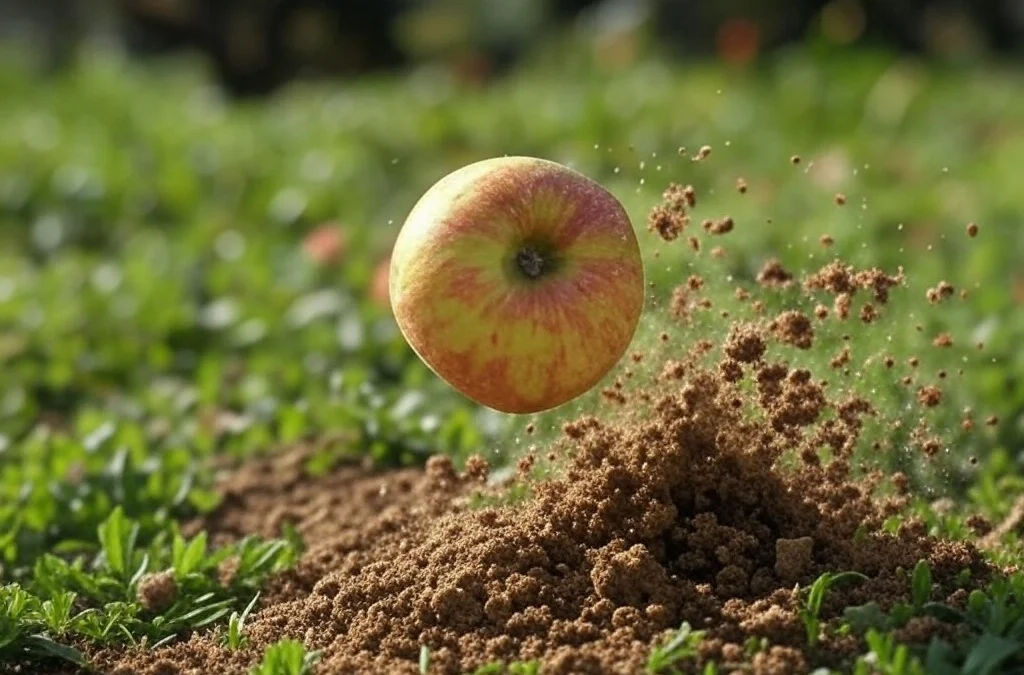Have you ever left a banana on the counter a bit too long, only to find it covered in brown spots and turning mushy? This everyday occurrence is a simple example of decay, a natural process that affects everything around us. Decay isn’t just about food going bad – it’s a fascinating phenomenon that happens in various forms, from the rusting of an old bicycle left out in the rain to the slow crumbling of ancient ruins. Understanding decay helps us see the world differently, appreciating the delicate balance between creation and decomposition that keeps nature in harmony.
In this article, we’ll explore 20 intriguing examples of decay that you might encounter in daily life or hear about in the news. From the gradual fading of a once-vibrant painting to the breakdown of plastic waste in landfills, decay is everywhere. It can be a reminder of the passage of time, showing us how objects and materials change and transform. By looking at these examples, we gain insight into the natural processes that shape our environment, offering a fresh perspective on how we interact with the world around us.
Understanding Decay
Decay is a natural process that refers to the gradual breakdown or decomposition of organic or inorganic matter over time. This phenomenon can occur in various contexts, including biological, chemical, and physical domains. In a biological sense, decay is often associated with the decomposition of organic matter, such as plants and animals, by microorganisms like bacteria and fungi. These organisms break down complex organic compounds into simpler substances, returning essential nutrients to the soil and playing a crucial role in the ecosystem’s nutrient cycle.
In a chemical context, decay can describe the process by which unstable atomic nuclei lose energy by emitting radiation, known as radioactive decay. This process results in the transformation of an element into another element over time, often with the release of particles and energy. Radioactive decay is a fundamental concept in nuclear physics and has applications in fields such as medicine, archaeology, and energy production.
Decay can also refer to the gradual decline in the strength, quality, or condition of an object or system. For example, the decay of a building may involve the deterioration of its materials due to environmental factors like weathering, moisture, and pollution.
Overall, decay is a vital process that contributes to the recycling of materials in nature, the transformation of elements, and the inevitable aging and deterioration of objects and systems. Understanding decay helps us appreciate the dynamic and ever-changing nature of the world around us.
The Best Examples of Decay
Decay is all around us, transforming objects and environments over time in ways that are both fascinating and inevitable. From natural processes like composting leaves to the slow erosion of historical landmarks, these examples of decay reveal the beauty and complexity of how the world changes, fades, and evolves.
1. Natural Decomposition of Organic Matter
When leaves fall from trees, they begin to break down on the forest floor. This natural process is known as decomposition. Microorganisms like bacteria and fungi feed on the dead leaves, turning them into nutrient-rich soil. This cycle is essential for new plant growth and maintains the health of the ecosystem.
2. Rust on Metal Surfaces
When metal is exposed to moisture and oxygen over time, it forms rust. This reddish-brown coating weakens the metal structure, making it brittle. Rust is a clear indicator of decay, often seen on vehicles, tools, and outdoor structures, signaling the need for maintenance or replacement.
3. Urban Decay in Abandoned Buildings
Cities often have areas with abandoned buildings, where neglect leads to urban decay. These structures become unsafe as roofs collapse and walls crack. The decay reflects economic decline or shifts in population, leaving once-vibrant areas to deteriorate.
4. Human Aging and Biological Decay
As humans age, their bodies undergo biological decay. Cells regenerate more slowly, skin loses elasticity, and bones may become fragile. This natural process affects everyone, leading to the visible signs of aging and the need for increased healthcare.
5. Decay of Historical Monuments
Historical monuments, made of stone or metal, are susceptible to decay from weathering and pollution. Acid rain can erode stone carvings, while air pollutants can tarnish metal surfaces. Preserving these monuments requires constant care and restoration efforts to combat decay.
6. Food Spoilage
When food is left out or stored improperly, it spoils due to microbial growth. Bacteria and mold break down the food, changing its texture, smell, and taste. Spoiled food is a common example of decay, emphasizing the importance of proper storage to prevent waste.
7. Wood Rot in Structures
Wooden structures, like houses or fences, are vulnerable to rot when exposed to moisture. Fungi thrive in damp conditions, breaking down the wood fibers. This decay weakens the structure, requiring repairs or replacement to maintain safety.
8. Coral Reef Degradation
Coral reefs are experiencing decay due to climate change and pollution. Warmer ocean temperatures cause coral bleaching, while pollutants hinder coral growth. This degradation affects marine biodiversity, as reefs provide essential habitats for countless species.
9. Decay in Literature and Art
In literature and art, decay is often used as a theme to explore the passage of time and human mortality. Artists depict decaying landscapes or aging figures to evoke emotions and reflect on life’s transient nature. These works resonate with audiences by highlighting the inevitability of decay.
10. Economic Decay in Industries
Industries can experience economic decay when they fail to adapt to changing markets or technologies. Once-thriving sectors may decline, leading to job losses and reduced economic output. This decay underscores the need for innovation and adaptation in a rapidly changing world.
11. Decay of Digital Data
In the digital age, data decay is a growing concern. Over time, storage media like hard drives and CDs can degrade, leading to data loss. Files may become corrupted, leaving valuable information inaccessible. Regular backups and data migration to newer technologies are essential to prevent this type of decay.
12. Decaying Sound in Music
In music, decay refers to the gradual fading of a sound after it is produced. This natural process contributes to the richness of acoustic experiences. Musicians and audio engineers manipulate decay to create depth and emotion in compositions, highlighting its importance in auditory art.
13. Decay of Language
Languages can decay when they lose speakers and fall out of use. As communities adopt dominant languages, traditional dialects may disappear. This linguistic decay results in the loss of cultural heritage and knowledge, prompting efforts to revive and preserve endangered languages.
14. Decay of Social Connections
In modern society, social connections can decay due to busy lifestyles and digital distractions. Friendships may weaken as face-to-face interactions decrease. This decay impacts mental health and well-being, emphasizing the need to nurture personal relationships.
15. Decay of Memory
Human memory naturally decays over time. As people age, they may struggle to recall past events or details. This cognitive decline is a normal part of aging, but it can be mitigated with mental exercises and a healthy lifestyle to maintain brain function.
16. Decay of Infrastructure
Infrastructure, such as roads and bridges, can decay without proper maintenance. Weather, heavy use, and time contribute to the deterioration of these essential structures. Regular inspections and repairs are crucial to ensure safety and functionality.
17. Decay of Trust
Trust between individuals or within communities can decay due to dishonesty or unmet expectations. Once trust is broken, it can be challenging to rebuild. This social decay can lead to conflicts and a breakdown in cooperation, highlighting the importance of integrity and communication.
18. Decay of Traditional Skills
As technology advances, traditional skills and crafts may decay. Skills like woodworking or hand-sewing are practiced less frequently, risking their disappearance. This decay represents a loss of cultural identity and craftsmanship, inspiring initiatives to preserve and teach these skills.
19. Decay of Political Systems
Political systems can decay when they become stagnant or fail to address citizens’ needs. Corruption, inefficiency, and lack of reform contribute to this decline. Political decay can lead to public disillusionment and unrest, necessitating reform and renewal.
20. Decay of Natural Habitats
Natural habitats can decay due to human activities like deforestation and pollution. This environmental decay disrupts ecosystems and threatens biodiversity. Conservation efforts aim to reverse habitat decay and protect the planet’s ecological balance.
The Role of Time in Natural Processes
Time is an invisible yet powerful force that shapes everything around us. It’s fascinating to consider how time influences natural processes, subtly altering the world in ways we might not notice immediately. For instance, the gradual weathering of rocks is a process that unfolds over thousands of years, transforming rugged mountains into rolling hills. Similarly, the slow formation of soil from organic matter and minerals represents time’s patient work, providing the foundation for plant life.
Time also affects living organisms. Trees, for example, grow rings that tell stories of past climates and environmental conditions. These rings can reveal years of drought or abundant rainfall, offering insights into historical climate patterns. In the animal kingdom, the life cycles of creatures like cicadas, which spend years underground before emerging for a brief period, highlight the intricate timing woven into the fabric of life.
Moreover, time plays a crucial role in human history and culture. Ancient ruins, once vibrant centers of civilization, stand as silent witnesses to the passage of time. These structures, slowly succumbing to the elements, remind us of our impermanence and the continuous march of time. By studying these remnants, archaeologists piece together stories of human achievement and downfall, deepening our understanding of the past.
In essence, time is a universal thread that connects various natural processes, influencing everything from geological formations to biological cycles. Recognizing the role of time helps us appreciate the dynamic and ever-changing nature of our world. It encourages us to look closer at the subtle transformations occurring around us, enriching our understanding of the complex tapestry of life.
Understanding Biological Decay
Biological decay is a natural process where organic material breaks down into simpler substances over time. This process is crucial for the recycling of nutrients in ecosystems. When plants and animals die, their bodies become food for a wide range of decomposers, including bacteria, fungi, and insects. These organisms help break down complex organic matter into simpler compounds like carbon dioxide, water, and minerals, which are then released back into the soil and atmosphere. This nutrient recycling is essential for maintaining soil fertility and supporting new plant growth.
The stages of biological decay typically include initial decomposition, active decay, and advanced decay. During the initial phase, bacteria and fungi begin to break down soft tissues. This is followed by active decay, where the body loses a significant amount of mass due to the activity of decomposers. In the final stage, advanced decay, most of the soft tissue has been decomposed, leaving behind bones and other resistant materials. Understanding this process is important for fields such as agriculture, waste management, and forensic science. It helps in optimizing composting methods, managing waste effectively, and determining the time of death in forensic investigations.
The Role of Radioactive Decay in Nuclear Physics
Radioactive decay is a process where unstable atomic nuclei lose energy by emitting radiation. This process is fundamental to the field of nuclear physics and has important applications in medicine, energy production, and archaeology. There are several types of radioactive decay, including alpha decay, beta decay, and gamma decay. Each type involves the release of different particles or electromagnetic waves, which can transform the original atom into a different element or isotope.
In alpha decay, an unstable nucleus emits an alpha particle, which consists of two protons and two neutrons. This process decreases the atomic number by two and the mass number by four, resulting in a new element. Beta decay involves the emission of a beta particle, which is either an electron or a positron. This changes the atomic number by one unit but does not affect the mass number. Gamma decay, on the other hand, involves the release of gamma rays, which are high-energy photons. This type of decay does not change the atomic number or mass number but helps the nucleus release excess energy.
Radioactive decay has practical applications, such as in radiocarbon dating, which is used to determine the age of archaeological artifacts. It is also crucial in the medical field for imaging and cancer treatment, as well as in nuclear power generation, where it provides a source of energy. Understanding radioactive decay is essential for harnessing its potential benefits while ensuring safety and minimizing risks associated with radiation.
The Positive Side of Decay
Decay is often seen as something negative – a sign of loss or failure. But in nature, it’s a cornerstone of renewal. Without decay, life as we know it would grind to a halt. It’s not just about things breaking down; it’s about what comes after. Decay sets the stage for new beginnings.
When a tree falls in the forest, it might seem like the end. Over time, though, the decaying wood becomes a home for insects, fungi, and microorganisms. These tiny organisms break it down piece by piece. The nutrients from the tree seep into the soil, enriching it. This nutrient-rich soil then supports new plant life, continuing the cycle. What looks like destruction is actually the groundwork for growth.
Think about the leaves that fall every autumn. They form a soft, crumbling layer on the ground. As they break down, they feed the earth. This process isn’t just about the soil – it’s about the plants that will grow stronger next season because of it. Gardeners and farmers have long understood this, using compost to help their crops thrive. It’s a simple but powerful reminder that decay isn’t waste – it’s a resource.
Even on a personal level, decay has lessons to teach. Watching something age or deteriorate can be a humbling experience. It reminds us of the passage of time and the interconnectedness of life. But it also offers hope. Just like a fallen tree nurtures the forest floor, the end of one thing can spark the beginning of another.
Nature has a way of recycling everything, leaving nothing to go to waste. Decay is proof of this efficiency. It’s not just an end; it’s part of a larger system that ensures balance and renewal. By understanding this, we can see decay not as something to fear, but as a natural and even beautiful process that keeps life moving forward.
Decay in Urban Environments
Urban decay is a pressing issue in many cities around the world. It involves the deterioration of buildings and infrastructure, often leading to abandoned properties and declining neighborhoods. This can have a significant impact on local economies and community morale. Factors contributing to urban decay include economic downturns, population shifts, and neglect of maintenance. As buildings age, they require regular upkeep to remain safe and functional. Without it, decay sets in.
However, urban decay also presents opportunities for revitalization. Many cities have launched initiatives to transform decaying neighborhoods into vibrant communities. This often involves renovating old buildings, creating green spaces, and encouraging local businesses. Such efforts can breathe new life into an area, attracting residents and visitors alike. The challenge lies in balancing development with preserving the unique character of these neighborhoods. For those interested in urban planning and community development, urban decay represents both a challenge and a chance to create positive change.
Natural Decay Processes
Decay is a natural part of ecosystems, playing a crucial role in nutrient cycling. When plants and animals die, their decomposition returns essential nutrients to the soil. This process supports new growth and maintains the balance of ecosystems. Fungi, bacteria, and insects are key players in breaking down organic matter. Without decay, ecosystems would be overwhelmed with dead material, and new life would struggle to emerge.
While decay is a vital process, it can also be influenced by environmental changes. Factors like temperature, moisture, and the presence of decomposers affect the rate of decay. In some areas, human activities have disrupted these natural processes. Pollution and habitat destruction can alter decay dynamics, impacting ecosystem health. Understanding how decay works in different environments helps scientists and conservationists develop strategies to protect biodiversity. For the curious nature enthusiast, observing decay can reveal the intricate connections that sustain life on Earth.
Read also: 20 Oblivion Examples & Definition
The Most Popular on BitGlint

40 Social Dilemma Examples in the World & Real Life
Social dilemmas are everywhere. They shape the choices we make at work, in our communities, and even on a global...

30 Favor Examples & Definition
Doing a favor means helping someone without expecting anything in return. It’s an act of kindness that can strengthen...

30 Naivety Examples & Definition
Naivety is something most people experience at some point in their lives. It often starts in childhood, but for some,...

20 Chronology Examples & Meaning
Chronology is something we use more than we realize. It shows up in conversations, in how we remember the past, and in...

30 Wishful Thinking Examples & Meaning
Wishful thinking is something we all do at some point. You hope things will turn out fine—even if there’s no real...

20 Examples of Gravity & What Gravity Really Is
Gravity is one of the most important forces in the universe, but many people don’t fully understand what it really is...

20 Examples of Secondary Consumers in the Food Chain
Secondary consumers are animals that eat other animals—usually herbivores that feed on plants. They’re an important...
Get Inspired with BitGlint
The Latest
30 Flow State Examples & Definition
Most people have felt it at some point — that rare moment when everything just clicks. You're working, moving, or thinking, and suddenly it's like the rest of the world fades out. You're focused, clear, and everything you're doing feels smooth and natural. That’s...

30 Cynicism Examples in Everyday Life & Definition
Cynicism is something most people have seen, heard, or even felt - but few stop to really think about what it means. It shows up in jokes, in conversations, and in quiet thoughts we don’t always say out loud. Some people wear it like armor. Others see it as honesty....
50 Examples of Square Things
Square things are part of everyday life, even if we don’t always think about them. From objects we use at home to tools, packaging, and design elements we see out in the world, the square shape is everywhere. It’s simple, balanced, and practical — which is exactly why...
30 Examples of Perspective: Diverse Viewpoints Explored
Perspective shapes our view of the world. It's the lens through which we interpret events, relationships, and ideas, influenced by our background, experiences, and beliefs. In this article, we dive into 30 diverse examples of perspective, showcasing how differently...

